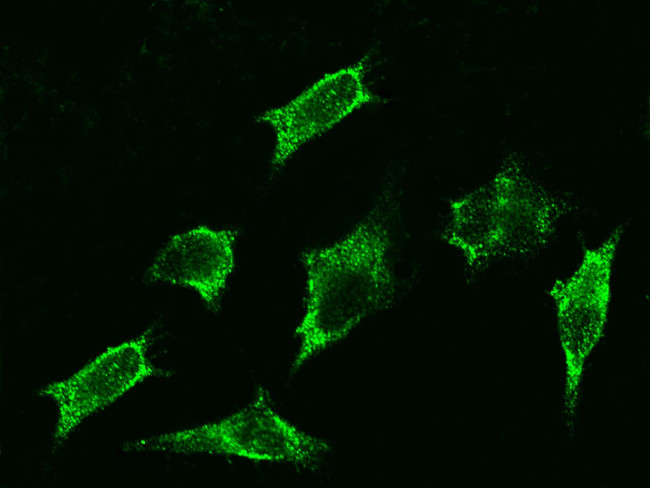Now live! RTHM Direct – simplified medication access for Long COVID, ME/CFS and related conditions. Check it out
β2-adrenergic receptors (β2-AR) belong to the larger family of G protein-coupled receptors (GPCRs). The receptor primarily mediates the relaxation of smooth muscles, especially in the bronchioles of the lungs, making it a crucial target for asthma and COPD (chronic obstructive pulmonary disease) treatments. B2-AR is involved in various physiological processes, particularly in the respiratory system. Activation of beta 2 adrenergic receptors by specific agonist molecules, such as beta 2 adrenergic receptor agonist drugs, leads to relaxation of the smooth muscle, bronchodilation, and increased airflow in the lungs.
Functions of the β2-adrenergic receptors (β2-AR)
The β2-AR predominantly responds to the neurotransmitters adrenaline and, to a lesser extent, norepinephrine. The β2-AR is found in the lungs, blood vessels, and other organs.
- Lungs
Bronchial Smooth Muscle Relaxation: Activation of β2-ARs in the bronchial smooth muscle leads to bronchodilation, making it easier to breathe. This is why β2 agonists like albuterol and salmeterol are commonly used to treat conditions like asthma and chronic obstructive pulmonary disease (COPD). - Blood Vessels
Vasodilation: Activation in certain blood vessels leads to vasodilation, which can reduce blood pressure. This effect is particularly evident in the blood vessels of skeletal muscles. - Skeletal Muscle
Potassium Uptake: Activation can increase potassium uptake into skeletal muscles, which can be significant in conditions that cause hyperkalemia.
Increase in Muscle Contractility: This effect can be observed during the “fight or flight” response. - Liver
Glycogenolysis and Gluconeogenesis: Activation in the liver stimulates the breakdown of glycogen to glucose (glycogenolysis) and the formation of glucose from non-carbohydrate precursors (gluconeogenesis), increasing blood glucose levels. - Pancreatic Beta Cells
Insulin Release: Activation can stimulate the release of insulin.
- Uterus
Relaxation: Activation can lead to relaxation of the uterine smooth muscle, which can delay labor. β2 agonists have been used historically as tocolytics to inhibit premature labor.
- Ciliary Body in the Eye
Aqueous Humor Production: β2-AR activation can increase the production of aqueous humor, which is relevant in conditions like glaucoma.
While β2 agonists are beneficial in conditions like asthma, their overuse or excessive activation can lead to side effects such as tachycardia, tremors, or hypokalemia.
Autoantibodies to β2-adrenergic receptors (β2-AR)
Autoantibodies to β2-adrenergic receptors (β2-AR) have been identified in various medical conditions, including asthma, myasthenia gravis, complex regional pain syndrome, open-angle glaucoma, and heart failure. These autoantibodies can have functional effects on the receptors, such as inhibiting ligand binding, attenuating receptor function, and inducing receptor downregulation. In some cases, the presence of β2-AR autoantibodies has been associated with disease progression and severity. However, the exact role and significance of these autoantibodies in each condition are still being investigated. (Turki and Liggett 1995) (Eng et al. 1992) (Kohr et al. 2012) (Junemann et al. 2019) (Cao et al. 2019) (Ben-Shalom et al. 2023) (Vecchio et al. 2023)
Dysautonomia, POTS, and Orthostatic Hypotension
Autoantibodies activating β1/2-adrenergic receptors have been found in some patients with idiopathic orthostatic hypotension (OH). These autoantibodies and their cardiovascular effects offer new mechanistic insights into the pathophysiology of OH. (Yu et al. 2012)
Postural tachycardia syndrome (POTS) is a cardiovascular disorder characterized by an exaggerated heart rate increase upon standing. Recent studies have suggested that autoantibodies against adrenergic receptors play a role in the pathophysiology of POTS. These autoantibodies, specifically targeting α1-adrenergic (α1AR) and β1/2-adrenergic receptors (β1/2AR), have been found in the serum of POTS patients. They have been shown to activate these receptors and alter their responsiveness, leading to symptoms associated with POTS. The presence of these autoantibodies supports the concept of adrenergic autoimmunity in POTS and highlights the potential for targeted therapies in the future. (Fedorowski et al. 2018) (Li et al. 2014) (Gunning et al. 2019)
Myalgic Encephalomyelitis/Chronic Fatigue Syndrome
Autoantibodies to β2-adrenergic receptors (β2-AR) have been found in patients with Myalgic Encephalomyelitis/Chronic Fatigue Syndrome (ME/CFS). These autoantibodies are believed to play a role in the pathogenesis of ME/CFS and may contribute to the symptoms experienced by patients. Studies have shown that ME/CFS patients have elevated levels of β2-AR autoantibodies compared to healthy controls. These autoantibodies can activate β2-AR, leading to dysregulation of adrenergic signaling and potentially explaining various clinical symptoms of ME/CFS. Further research is needed to fully understand the role of β2-AR autoantibodies in ME/CFS and their potential as biomarkers or therapeutic targets. (Loebel et al. 2016) (Bynke et al. 2021) (Wirth and Scheibenbogen 2020) (Fujii et al. 2021)
SARS-CoV-2 and Long COVID
There is evidence of the presence of autoantibodies targeting β2-adrenergic receptors (β2-AR) in patients with Long COVID. These autoantibodies have been associated with impaired retinal microcirculation and may contribute to the pathophysiology of Long COVID. Immunoadsorption, a treatment that removes autoantibodies, has shown transient benefits in some patients with post-COVID syndrome. However, further research is needed to fully understand the role of these autoantibodies in Long COVID and to develop targeted therapies. (Szewczykowski et al. 2022) (Giszas et al 2023)
Glaucoma
In patients with primary open-angle glaucoma (POAG) and ocular hypertension (OHT), autoantibodies against β2-AR have been identified. The pathogenesis of these ocular diseases, which are characterized by increased intraocular pressure, remains largely unknown, but the presence of these autoantibodies might play a role. (Junemann et al. 2018)
Cardiac Diseases
Autoantibodies to β-adrenergic receptors, including β2-AR, have been reported in several cardiac diseases. These autoantibodies have pathophysiologic relevance and may have opposing effects on cardiac myocyte apoptosis. Specifically, autoantibodies to β2-AR were noted alongside β1-AR and M2 muscarinic receptor autoantibodies, indicating a potential complex interplay in cardiac conditions. (Stavrakis et al. 2011)
Learn more about autoantibody testing at “RTHM Lab Now Offering GPCR+ Autoantibody Panel” and visit our Lab Page to order your GPCR+ Antibody Panel today.
Featured image courtesy of ThermoFisher Scientific.

Get updates
Join our mailing list



